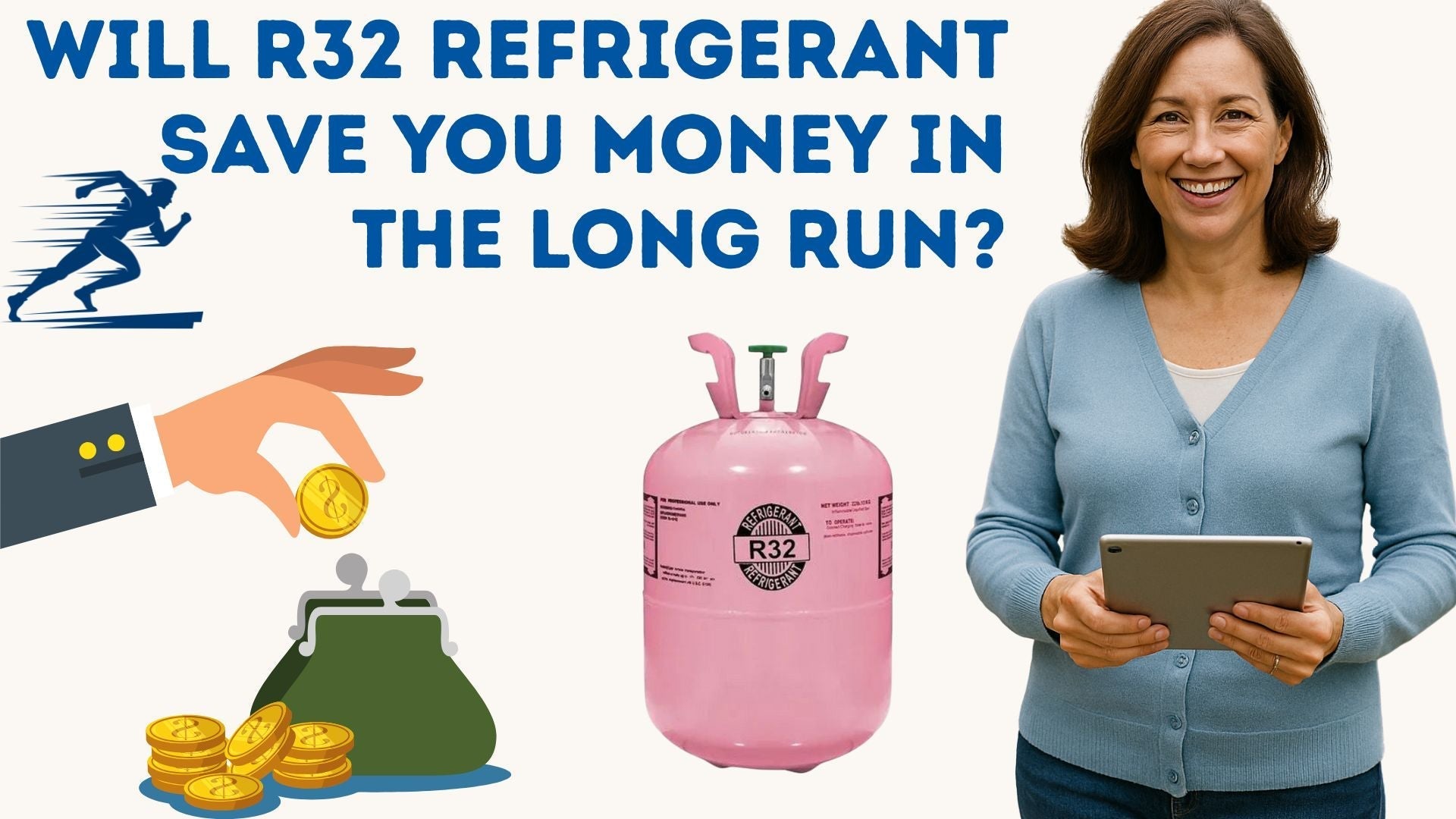The Hidden Cost of Outdated Refrigerants
Most older HVAC systems run on R-22 or R-410A—refrigerants that are not only less efficient, but are now heavily regulated. As demand falls and production stops, servicing those systems will get more expensive.
According to Energy.gov, upgrading to a more energy-efficient system can cut your cooling costs by 20%–40%. When you consider that R32 systems use less refrigerant and offer better thermal exchange, that’s serious long-term savings.
What Makes R32 More Efficient?
R32 has a higher cooling efficiency than R-410A, meaning your system doesn't have to work as hard to reach the set temperature. That translates to:
-
Lower electricity consumption
-
Shorter compressor run times
-
Less wear and tear on the system
And because it operates at lower pressure than some traditional refrigerants, your components last longer too.
Learn more about refrigerant efficiency from Daikin’s R32 overview, where they explain why it’s become their global standard.
How the Right HVAC System Pays for Itself
A new R32 packaged AC system can seem like a big upfront investment, but the payback period is often faster than expected—especially when paired with a programmable thermostat and zoned control.
💡 Bonus Tip: Look for systems with ENERGY STAR certification, which can qualify for local utility rebates. Use DSIREUSA.org to search by your ZIP code for applicable incentives.
Maintenance & Repair: Less Frequent, Less Costly
One of the reasons I recommend R32 packaged systems to friends and family is that they require fewer service calls. Why?
-
R32 is a single-component refrigerant, which makes leak detection and recharging simpler.
-
It’s widely available, which keeps service costs down.
-
Modern R32 units are designed for tool-free access, cutting technician labor time.
Need a reliable R32 option? I suggest checking out The Furnace Outlet’s R32 residential packaged AC units. They’re priced competitively and backed by warranty.
The Long-Term Financial Picture
Here’s a simplified breakdown over a 10-year lifecycle:
| System Type | Initial Cost | Energy Savings | Total Maintenance | Net 10-Year Cost |
|---|---|---|---|---|
| R-410A System | $4,500 | $0 (baseline) | $2,500 | $7,000 |
| R32 Packaged System | $5,200 | -$2,000 | $1,200 | $4,400 |
Savings based on average cooling costs in the U.S.
Final Thoughts
Yes, R32 systems save you money. Maybe not in the first month, but definitely in the years that follow. From better efficiency to lower maintenance to potential rebates, R32 offers the kind of value smart homeowners (like us!) are looking for.
If you’re on the fence, remember: sometimes, saving starts with switching.







